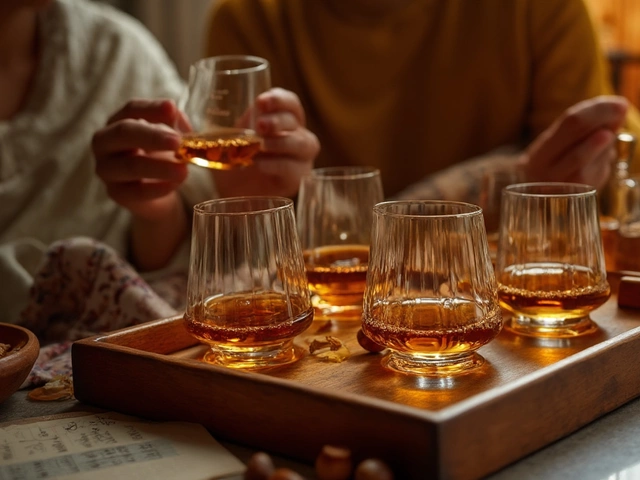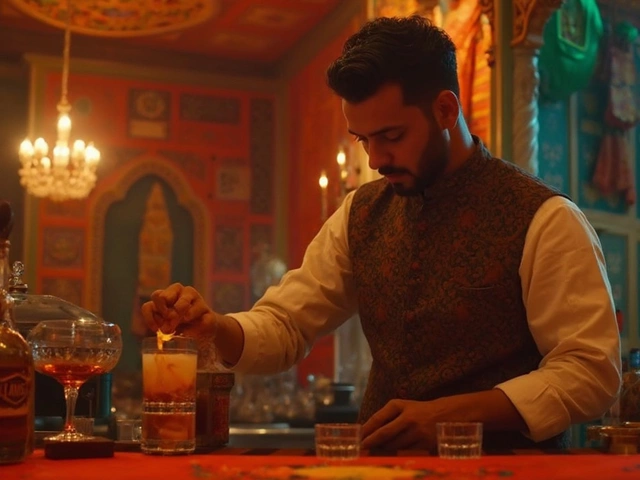
If you’ve ever eyed a wine list and hesitated about ordering that glowing $350 bottle, you’re not alone. The price is one thing, but then there’s the tip—do you hand over an extra $70 just for the pleasure of drinking it? Each time I dine out with friends or with Lachlan, someone at the table cracks the joke: “If we order the Dom Pérignon, do we need to put our sommelier’s kid through college?” The question of tipping on expensive wine isn’t just about the math. It’s tangled up with tradition, social pressure, and some real confusion about what you’re actually paying for—and who earns it.
Where Did the 20% Tipping Tradition Come From?
The 20% tip didn’t always rule restaurant culture. According to a 2022 survey by YouGov, around 77% of Americans tip at least 15% in sit-down restaurants, but only 23% stick to 20% or more, and fewer in Europe. Tipping itself has a murky history; it gained traction in the U.S. in the late 19th century, largely imported from European aristocrats. Over time, it ballooned into an expected part of dining, especially as American restaurants realized they could rely on tips instead of higher wages. But wine? That came later, with the rise of ambitious wine programs in the ‘80s and ‘90s, thanks to chefs like Alice Waters and fine-dining temples like Per Se or French Laundry, where bottles can cost thousands.
Back then, tipping standards were simpler: tip a certain percentage of the meal, sometimes rounding down on pricey whiskey, cognac, or Champagne. But as wine lists started featuring more four-digit bottles, diners grew more careful. Do you mathematically tip on a $15 burger and a $700 Burgundy the same way? If you’re wondering, you’re in good company. Even professionals sometimes wrestle with that math.
The Hidden Work of Wine Service
Let’s pull back the curtain on what that tip actually covers. Wine service is more than uncorking a bottle and pouring a glass. A skilled sommelier or server guides you through the list, answers questions, suggests a pairing, checks vintages, decants older bottles, keeps appropriate glasses polished, and ensures the wine’s at the perfect temperature. In restaurants with dedicated wine staff, the sommelier does a lot of invisible work—building the list, sourcing bottles, managing inventory, organizing the cellar, and, yes, sometimes dusting off that one trophy bottle waiting for a big spender.
Choosing wine isn’t always easy for diners, either. According to Wine Market Council data in 2024, 41% of regular wine drinkers say they’re intimidated by restaurant wine lists. The service helps offset that uncertainty. But as much as hospitality is built on care and expertise, that four-figure mark-up isn’t going straight to your server or somm. Most restaurants split the tip with everyone on the floor, and the wine director often gets just a portion. On a $500 bottle, a 20% tip means $100—of which your server might only see $20 or $30 after pooling with bartenders, runners, and bussers. The rest, if you’re curious, helps subsidize the wage gap that American dining culture has yet to fix.
Should You Tip 20% on Expensive Wine? The Case for and Against
This bit gets thorny. Traditionally, yes—you tip 20% on everything, including wine. Many restaurants print that right on the menu, and a lot of diners follow suit out of habit. Tipping less on wine, especially in fine dining, is often considered a faux pas. For lower-priced bottles (say, under $100), tipping 20% feels reasonable: you’re rewarding the service and the careful selection. A wine tipping survey by TripAdvisor in 2023 found that 60% of diners in high-end U.S. restaurants tip full percentage on wine, regardless of price.
But when that bottle gets into triple digits, or more? There’s some gray area. Even industry insiders sometimes cap their tips on extremely expensive bottles—especially if the service doesn’t reflect special expertise (like a perfunctory pour, or the bottle arriving already opened). Some people use a split method: tip 20% on the food and lower—say, 10%—on the wine if it’s a splurge. Others tip 20% on the whole bill but only if the wine service was exceptional. And in some countries (hello, France!), wine isn’t tipped at all—the price includes service, and the staff are paid accordingly.
So, what happens if you tip a little less on expensive wine? Most servers will notice, but few will say anything—though you might lose a little of the red-carpet enthusiasm if you become a regular. For restaurants that thrive on big wine sales, like steakhouses or fine French bistros, tipping less is sometimes quietly accepted if handled with grace. In more casual spots, though, skimping on wine tips can leave you with a cold stare, or even a post-dinner gripe at the bar.

Tips For Navigating the Wine Tipping Dilemma
If your heart stutters at that 20% line on expensive bottles, there are some ways to handle it with style and kindness.
- Ask about the house policy. Some restaurants share tips between all staff. Some have a somm-specific pool. If you’re ordering a special bottle, a quick “Does the wine service go to the sommelier?” isn’t rude.
- Consider the service. Did the sommelier make your night? Did they offer perfect pairings, solve an allergy conundrum, or whip up a rare bottle? If yes, tip big. If all they did was hand you a bottle, adjust accordingly.
- Cap only on extreme bottles. If your wine costs more than your month’s rent, most servers understand if you don’t tip $1,000. Use your judgment, and consider writing a thank-you note or speaking to the manager.
- Leave something extra for standout staff. A few years ago, in Napa, Lachlan and I had our minds blown by a tiny bistro’s wine director who spent 20 minutes geeking out with us about natural wine. Our budget didn’t leave us splashing out on a crazy tip, so we left a handwritten note and circled back with a positive online review. That kind of thanks, I promise, is never forgotten.
- Avoid awkward math at the table. Decide ahead of time what feels right. Some diners split the check, others designate one person to handle the tip so the moment doesn’t get tense or public.
When in doubt, honesty and appreciation carry a lot more weight than rigid percentages.
Wine Tipping Customs Around the World
Stepping outside the U.S.? The rules change—sometimes dramatically. In most of Europe, for instance, service is included by law (you’ll see “service compris” in Paris), and tipping is virtually optional—rounded up coins for excellent service, if anything. Britons tend to tip around 10-12%, but rarely more, and rarely on wine. Australians and New Zealanders don’t tip unless service was spectacular (which, by the way, makes their hospitality culture charmingly low-pressure).
Let’s look at how wine tipping compares by region:
| Country/Region | Wine Tip Custom | Service Charge? |
|---|---|---|
| USA | 20% standard, on whole bill | Rarely auto-included, except for large parties |
| France | No tip on wine, unless exceptional service | Usually included ('service compris') |
| UK | 10-12% is typical | Often included in fine dining |
| Japan | Never tip, considered rude | Always included |
| Australia/NZ | Occasional, only for standout service | Not usually included |
So if you’re traveling or dining with folks from different cultures, don’t be surprised if their ideas about wine tipping are all over the map. It’s always smart to check the bill and ask if you’re uncertain.
The Bottom Line on Tipping for Expensive Wine
So, do you tip 20% on expensive wine, every time? There’s no one answer—just a mesh of tradition, personal budget, and the level of service you feel you received. Those who work in restaurants will quietly hope you tip on the whole bill. But if you ever find yourself staring at the check, doing the math on that $500 bottle and sweating a little, know you’re not alone. Most staff care more about genuine gratitude than a rigid number.
If the wine service was impeccable, go with the 20%. If the experience was just okay, nobody’s going to chase you out for tipping less on a bucket-list bottle. At the end of the night, the best rule? Be warm, be fair, and remember you’re supporting a dining culture that still runs on tradition, story, and a lot of human connection. Wine, after all, is meant to be enjoyed—and so is the act of giving thanks, in whatever way fits your night out.





Categories